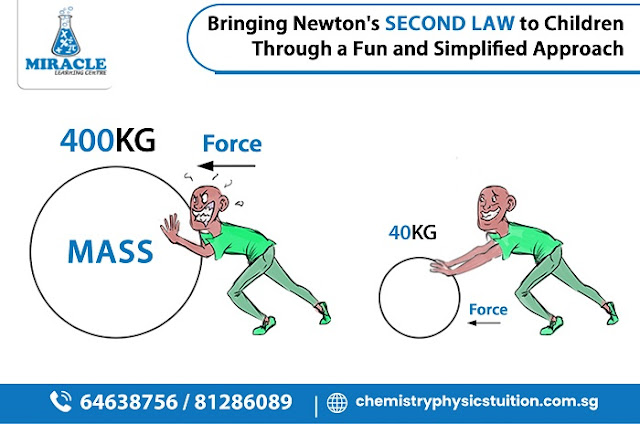Kinetic Energy's Impact on the World Around Us
Physics is a subject that often leaves students scratching their heads in confusion. The laws of motion, energy, and the intricate mathematical formulas can be daunting. However, understanding the concept of kinetic energy, one of the fundamental principles in physics, can shed light on how the world around us functions. Kinetic energy is not just a theoretical concept; it plays a crucial role in our daily lives, from the moment we wake up to the time we go to bed. In this article, we will explore the significance of kinetic energy in various aspects of our everyday lives, highlighting its relevance and importance. Whether you're a student struggling with physics or simply curious about the science behind our world, enrolling in a physics tuition program can provide you with the tools and knowledge to help you appreciate the role of kinetic energy in the world around us.
Understanding Kinetic Energy
Kinetic energy is defined as the energy of an object in motion. It is one of the fundamental forms of energy and can be calculated using the formula:
KE = (1/2) * m * v^2
Where:
KE represents kinetic energy.
m is the mass of the object.
v is its velocity.
The formula illustrates that the kinetic energy of an object is directly proportional to its mass and the square of its velocity. This means that as an object gains speed or has greater mass, its kinetic energy also increases exponentially.
Examples of Kinetic Energy in Everyday Life
Kinetic Energy in Transportation:
One of the most evident applications of kinetic energy in our daily lives is in transportation. When a car accelerates on the highway, the engine converts chemical energy from gasoline into kinetic energy, propelling the vehicle forward. The faster the car goes, the more kinetic energy it possesses. This energy is essential for overcoming friction and air resistance, allowing the car to maintain its speed. Similarly, kinetic energy is also responsible for the motion of bicycles, trains, and even walking.
Sports and Recreation:
Kinetic energy plays a significant role in sports and recreational activities. When a soccer player kicks a ball, they transfer their muscular energy into the ball, giving it kinetic energy. The ball's speed and motion are determined by the amount of energy transferred during the kick. Similarly, in activities like cycling, swimming, and running, athletes convert their metabolic energy into kinetic energy to propel themselves forward.
Renewable Energy Sources:
The generation of renewable energy often relies on harnessing kinetic energy from natural sources. Wind turbines, for instance, capture the kinetic energy of moving air and convert it into electrical energy. The rotation of the turbine blades is directly linked to the wind's kinetic energy, making this a sustainable and clean energy source. Hydropower plants work on the same principle, using the kinetic energy of flowing water to generate electricity.
Everyday Gadgets:
From the simplest to the most complex, our everyday gadgets rely on kinetic energy in various forms. A wristwatch uses the kinetic energy generated by the movement of your wrist to power its mechanisms. Self-winding watches are a classic example of this concept. Additionally, kinetic energy is used in piezoelectric devices, which convert mechanical vibrations, like those from footsteps, into electrical energy to power small electronic devices and sensors.
Safety Systems:
Kinetic energy is also crucial in safety systems that protect us in case of accidents. For example, airbags in cars deploy due to the sudden deceleration of the vehicle, converting the car's kinetic energy into a cushioning effect that reduces the impact on passengers. Similarly, crumple zones in cars are designed to absorb and dissipate kinetic energy in the event of a collision, protecting occupants from severe injuries.
Conclusion
In summary, kinetic energy is a fundamental concept in physics that impacts our daily lives in numerous ways. From the moment we wake up and commute to work or school to our engagement in sports and recreational activities, kinetic energy is at play. It also plays a vital role in the development of sustainable energy sources, contributing to a greener future. Understanding kinetic energy not only enhances our appreciation of the world around us but also equips us with valuable knowledge for solving real-world problems. If you're struggling with physics or want to delve deeper into the fascinating world of energy, consider enrolling in a physics tuition program in Singapore. With the right guidance, you can unlock the secrets of kinetic energy and gain a deeper understanding of the forces that shape our everyday lives.




Comments
Post a Comment